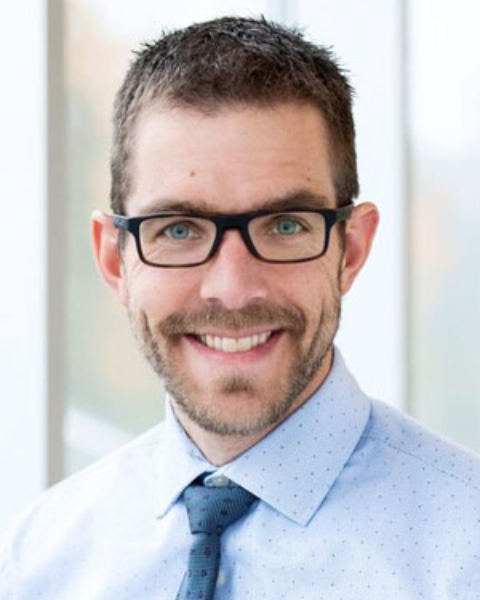QP 08 - Prof Dev 1:Professional Development and Medical Education - Quick Pitch
1042 - Radiation Oncologist Workload after Traditional Office Hours: A Threat to Work-Life Balance?
Tuesday, October 1, 2024
8:05 AM - 8:10 AM ET
Location: Room 158

Marc Gaudet, MD
The Ottawa Hospital, University of Ottawa
Ottawa, ON
Presenter(s)
M. Gaudet1, P. Martin2, K. Dennis1, S. Comino3, R. M. MacRae1, J. R. Pantarotto1, M. Diffey3, M. S. Macpherson4, and J. Renaud3; 1Division of Radiation Oncology, The Ottawa Hospital and the University of Ottawa, Ottawa, ON, Canada, 2CHU de Québec - Université Laval, Québec, QC, Canada, 3The Ottawa Hospital Cancer Centre, Ottawa, ON, Canada, 4Department of Radiology, Radiation Oncology and Medical Physics, University of Ottawa, Ottawa, ON, Canada
Purpose/Objective(s): The broad use of electronic medical records (EMR) and the incorporation of workflow automation might suggest a decrease in the workload of radiation oncologists. Nevertheless, clinical and administrative supports that were once accessible to these professionals have experienced substantial cutbacks in the last decade. The objective of the present study was to investigate whether there has been a shift in the proportion of after-hours work carried out by radiation oncologists in a prominent academic center over the past decade. Materials/
Methods: We analysed timestamps on task completion in the EMR for multiple radiation oncology tasks including Target completion, Plan Approval and Peer Review. After hours was defined as between 5PM and 8AM as well as anytime on weekends and statutory holidays. Proportion of these tasks completed after hours was compared between 2015 and 2023.
Results: A total of 118,213 tasks completed between 2015 and 2023 were analyzed. For plan approval the proportion of after-hours completion by year between 2015 and 2023 were 5,9%, 5.1%, 4.9%, 4.6%, 5.1%, 6.9%, 9.5%, 10.9% and 9.8% (p<0.001). For Targets these proportions between 2015 and 2023 were respectively 10,0%, 9.4%, 11.2%, 10.2%, 7.9%, 13.4%, 19.5%, 19.9% and 17.2% (p<0.001). For peer review these proportions between 2015 and 2023 were 21.4%, 9.2%, 11,0%, 9.9%, 12.8%, 12.5%, 17.8%, 24.5% and 26.6% (p<0.001). There was no clear trend for an absolute increase in tasks by Radiation Oncologist equivalent between 2015 and 2023. There did seem to be an inflection point with an increase in all tasks around 2019 when a new comprehensive EMR was introduced. We also analyzed proportion of after hours tasks by physician age and generation and there were no clear trends identified.
Conclusion: This analysis shows a rather alarming increase in radiation oncologist’s workload after-hours between 2015 and 2023. This reality can certainly adversely affect Radiation Oncologists work-life balance as well as disrupt workflows in the clinic. Further analyses will be required to best target strategies that would allow radiation oncologists to complete most of their tasks during work hours.
Purpose/Objective(s): The broad use of electronic medical records (EMR) and the incorporation of workflow automation might suggest a decrease in the workload of radiation oncologists. Nevertheless, clinical and administrative supports that were once accessible to these professionals have experienced substantial cutbacks in the last decade. The objective of the present study was to investigate whether there has been a shift in the proportion of after-hours work carried out by radiation oncologists in a prominent academic center over the past decade. Materials/
Methods: We analysed timestamps on task completion in the EMR for multiple radiation oncology tasks including Target completion, Plan Approval and Peer Review. After hours was defined as between 5PM and 8AM as well as anytime on weekends and statutory holidays. Proportion of these tasks completed after hours was compared between 2015 and 2023.
Results: A total of 118,213 tasks completed between 2015 and 2023 were analyzed. For plan approval the proportion of after-hours completion by year between 2015 and 2023 were 5,9%, 5.1%, 4.9%, 4.6%, 5.1%, 6.9%, 9.5%, 10.9% and 9.8% (p<0.001). For Targets these proportions between 2015 and 2023 were respectively 10,0%, 9.4%, 11.2%, 10.2%, 7.9%, 13.4%, 19.5%, 19.9% and 17.2% (p<0.001). For peer review these proportions between 2015 and 2023 were 21.4%, 9.2%, 11,0%, 9.9%, 12.8%, 12.5%, 17.8%, 24.5% and 26.6% (p<0.001). There was no clear trend for an absolute increase in tasks by Radiation Oncologist equivalent between 2015 and 2023. There did seem to be an inflection point with an increase in all tasks around 2019 when a new comprehensive EMR was introduced. We also analyzed proportion of after hours tasks by physician age and generation and there were no clear trends identified.
Conclusion: This analysis shows a rather alarming increase in radiation oncologist’s workload after-hours between 2015 and 2023. This reality can certainly adversely affect Radiation Oncologists work-life balance as well as disrupt workflows in the clinic. Further analyses will be required to best target strategies that would allow radiation oncologists to complete most of their tasks during work hours.
